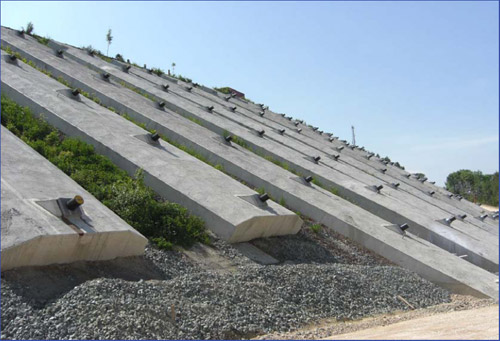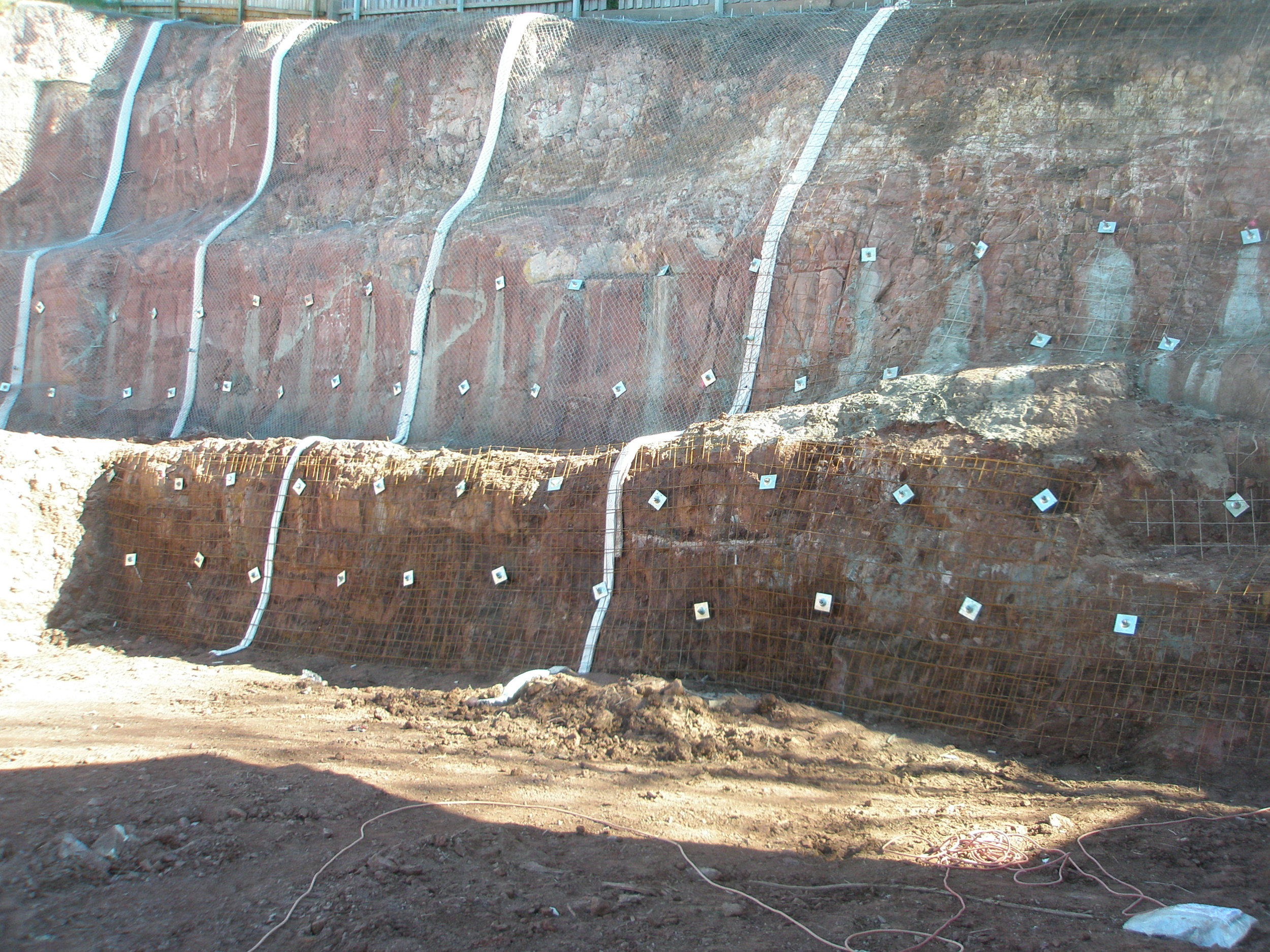Check Out the Full Variety Of Williams Anchors for Superior Ground Stablizing
Check Out the Full Variety Of Williams Anchors for Superior Ground Stablizing
Blog Article
High-Performance Rock Anchors for Challenging Environments
The need for high-performance rock supports in challenging atmospheres can not be overemphasized, particularly in the context of high slopes and seismic areas where conventional options frequently drop brief. These anchors, defined by their remarkable load-bearing capability and progressed corrosion resistance, play an essential duty in ensuring the stability of frameworks under damaging problems.
Importance of Rock Anchors
The importance of rock supports in design and building and construction can not be overstated, as they offer vital security and assistance in numerous geological conditions. These anchors are important for protecting frameworks to the bedrock, specifically in locations vulnerable to landslides, seismic task, or various other geological instabilities. By moving lots from the framework to stable rock formations, rock anchors help mitigate the risk of structural failure, ensuring both safety and longevity.
Furthermore, rock anchors help with the building of challenging projects, including deep excavations, retaining wall surfaces, and bridge structures. Their capacity to adjust to different soil and rock types makes them an important asset in civil engineering tasks worldwide. The convenience of rock supports allows engineers to develop solutions that address site-specific challenges, maximizing both efficiency and cost-effectiveness.
Furthermore, the use of rock supports can dramatically minimize the amount of material needed for building, resulting in more lasting methods. As infrastructure needs grow in complexity and range, the importance of rock supports in supplying dependable support systems will certainly continue to be a key factor to consider in engineering design and implementation. Their function in enhancing security makes rock anchors crucial in the contemporary construction landscape.

Trick Functions of High-Performance Anchors
High-performance supports are characterized by a number of vital functions that enhance their effectiveness popular applications. One of one of the most substantial characteristics is their exceptional load-bearing capability, which permits them to endure extreme forces without jeopardizing architectural stability. This is commonly accomplished through advanced products and cutting-edge layout, which ensure optimal strength-to-weight ratios.
Another vital feature is rust resistance, specifically for supports made use of in severe environments. Making use of specialized finishes or corrosion-resistant alloys significantly extends the life-span of these anchors, reducing upkeep expenses and improving integrity. In addition, high-performance supports are developed for flexibility, permitting simple installment in numerous geological problems, including broken rock or loosened soil.
Lots of high-performance anchors additionally incorporate checking capabilities, allowing real-time analysis of anchor efficiency under tons. These features jointly add to the discover this info here general efficiency and dependability of high-performance rock anchors in facility and difficult settings.
Applications in Testing Settings
Using sophisticated design concepts, high-performance rock anchors are essential in a variety of difficult settings, such as high slopes, deep excavations, and seismic areas. These anchors give crucial support and stability in problems where traditional anchoring techniques may stop working. In steep incline applications, they combat the pressures of gravity and dirt disintegration, protecting against landslides and ensuring the safety of framework over.
In deep excavation projects, high-performance rock supports are utilized to support retaining walls and prevent wall failure, hence assisting in safe building and construction techniques. Their capability to stand up to high tensile loads makes them ideal for these applications, where the integrity of the excavation site is paramount.
Furthermore, in seismic zones, rock supports are important for improving the strength of structures versus earthquake-induced forces. By firmly securing buildings pop over to this site and facilities to the bedrock, they minimize the threat of architectural failure during seismic events.
These applications show the adaptability and integrity of high-performance rock anchors, making them vital devices in geotechnical design (Williams Anchors). Their performance in protecting tough settings highlights the importance of continued development and application of durable anchoring options in the field

Cutting-edge Technologies in Rock Anchoring
Current advancements in rock anchoring innovation have transformed the way designers come close to stabilization and assistance in geotechnical jobs. Advancements such as high-strength products, advanced finishes, and smart surveillance systems have substantially enhanced the performance and reliability of rock anchors in tough settings.
One notable advancement is the usage of high-tensile additional reading steel alloys that offer remarkable strength-to-weight proportions, permitting lighter and more effective anchor systems without jeopardizing structural stability. Furthermore, corrosion-resistant finishes, such as epoxy or galvanized surfaces, prolong the life expectancy of anchors in extreme conditions, reducing maintenance needs.
In addition, the combination of smart innovation into rock anchoring systems enables real-time monitoring of support efficiency. Sensors embedded within the supports can provide vital data on load changes, variation, and ecological conditions, permitting designers to make enlightened choices and react proactively to prospective concerns.
Furthermore, developments in setup techniques, including making use of robotics and automated systems, improve the anchoring procedure, reducing labor expenses and improving safety and security. Jointly, these ingenious innovations not only boost the efficiency of rock anchors yet likewise ensure the long life and durability of geotechnical structures in tough atmospheres.
Best Practices for Setup and Maintenance
The performance of sophisticated rock securing innovations is largely based on proper installment and maintenance techniques. To guarantee optimal efficiency, it is necessary to perform extensive site evaluations before setup. This consists of assessing geological problems, identifying prospective hazards, and figuring out one of the most ideal anchoring method.
Throughout installment, adherence to producer requirements is essential. Appropriate exploration techniques, such as preserving the correct angle and depth, can dramatically enhance the anchor's hold. In addition, guaranteeing that the cement made use of for bonding is compatible with both the rock and the anchor material is essential for long-term stability.
Post-installation, routine assessments should be scheduled to keep an eye on for indicators of distress or destruction. This includes checking for rust, variation, and any kind of changes in load-bearing capacity. Williams Anchors. Executing a maintenance strategy that consists of routine screening and re-tensioning of supports can minimize risks related to environmental changes or unexpected tons boosts
Final Thought
In final thought, high-performance rock anchors play an essential duty in protecting structures within challenging settings. The versatility of these anchors, combined with innovative modern technologies such as clever surveillance systems, improves their effectiveness.
Report this page